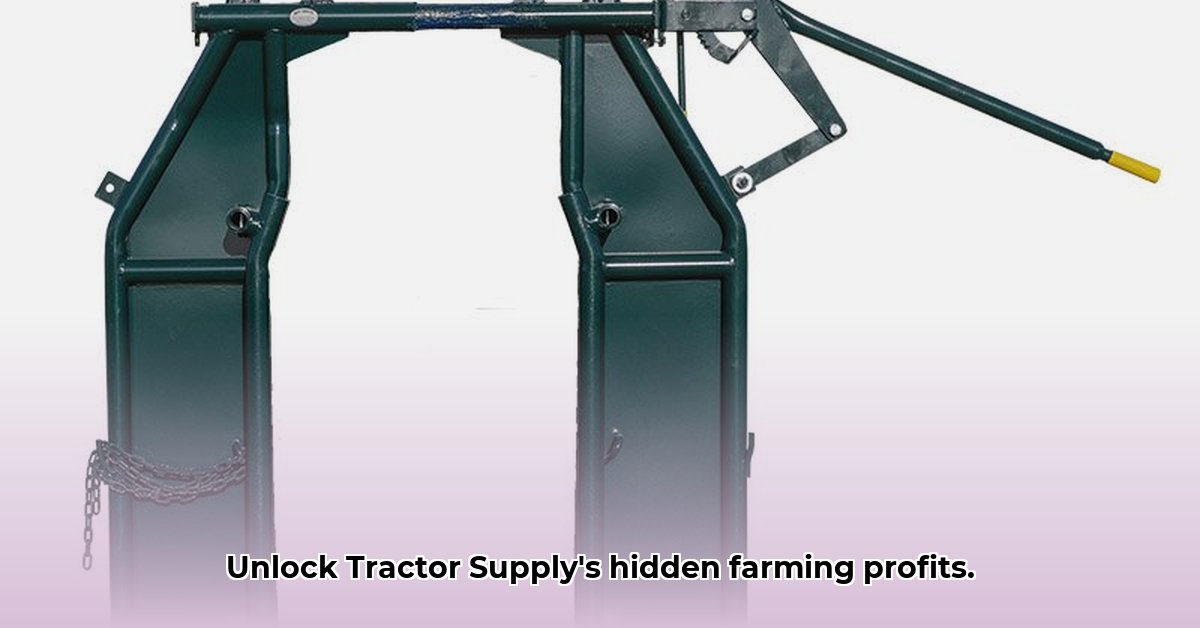
Understanding Squeeze Chutes and Their Role in Sustainable Agriculture
Choosing the right squeeze chute is a crucial investment for any farmer prioritizing sustainable practices. This isn't merely about acquiring equipment; it's about enhancing animal welfare, operational efficiency, and long-term farm profitability. For more on sustainable farming supplies, check out this helpful resource: farm supplies. This guide will walk you through selecting, using, and maintaining a squeeze chute to maximize its return on investment (ROI) while minimizing your environmental footprint.
What is a Squeeze Chute?
A squeeze chute is a livestock restraint device designed to safely and securely hold an animal for various procedures such as vaccinations, health checks, hoof trimming, and treatments. It provides a controlled environment, minimizing stress for both the animal and the handler. Think of it as a mobile veterinary clinic for your farm.
The Sustainable Agriculture Connection
Efficient livestock handling, greatly facilitated by a squeeze chute, is a cornerstone of sustainable agriculture. Reduced animal stress leads to improved animal health, minimizing the need for medications and reducing the associated environmental impact of drug residues. Furthermore, streamlined procedures improve vaccination and treatment efficiency, saving time and resources. Improved animal health also contributes to reduced methane emissions, a significant factor in sustainable farming practices. Finally, the ease of cleaning a well-designed chute conserves water, further supporting responsible environmental practices.
Types of Squeeze Chutes: Portable vs. Permanent
Several types of squeeze chutes cater to different farm sizes and operational needs:
Portable Squeeze Chutes: These offer flexibility, ideal for smaller farms or those with animals in multiple locations. However, they may be less durable than permanent options.
Permanent Squeeze Chutes: Built for daily, heavy use, these are robust and long-lasting. While generally more expensive upfront, their longevity and easy cleaning capabilities (often resulting in reduced water use) make them a worthwhile investment for larger operations.
Material Considerations: Common materials include steel (durable but heavier) and aluminum (lighter and easier to clean). Emerging sustainable materials are being explored, but more research is needed to evaluate their long-term viability.
| Feature | Portable Squeeze Chute | Permanent Squeeze Chute |
|---|---|---|
| Mobility | High | Low |
| Durability | Moderate | High |
| Initial Cost | Lower | Higher |
| Maintenance | Requires careful storage and transport | Easier cleaning and maintenance |
| Best Suited For | Smaller farms, varied locations | Larger operations, dedicated livestock areas |
Choosing the Right Squeeze Chute: Key Features
When selecting a squeeze chute, prioritize features that support sustainable practices and enhance animal welfare:
- Ease of Use: Intuitive design minimizes labor, saving time and resources.
- Animal Comfort: Padded sides and a comfortable head gate reduce stress and prevent injury.
- Safety: Sturdy construction, secure latches, and accessible release mechanisms safeguard both animals and handlers.
- Easy Cleaning: Smooth, easily cleanable surfaces minimize water usage and prevent disease buildup.
A Practical Guide to Squeeze Chute Selection and Use
This section provides a step-by-step guide to choosing and utilizing a squeeze chute effectively and humanely.
Step-by-Step Squeeze Chute Selection
- Assess Your Needs: Consider the number of animals, typical procedures, and your budget. Don't forget future needs!
- Choose Chute Type: Decide between portable and permanent based on your farm's size and operational requirements.
- Prioritize Features: Focus on ease of use, animal comfort, safety, and maintenance.
- Research Suppliers: Compare prices, features, warranties, and customer reviews from reputable manufacturers.
- Consult with Experts: Seek advice from your veterinarian or agricultural extension agent before making a final decision.
Safe and Humane Use of the Squeeze Chute
Proper usage is paramount for animal welfare. Remember these vital steps:
- Calm Approach: Lead the animal gently into the chute, using quiet tones and avoiding sudden movements.
- Secure Restraint: Close the doors firmly but gently, ensuring a comfortable restraint.
- Efficient Procedures: Perform necessary procedures swiftly and efficiently.
- Gentle Release: Unlock the chute door calmly, allowing the animal to exit without stress. A reward system can improve animal acceptance.
Regular Maintenance Checklist
Regular maintenance is essential for maximizing the chute's lifespan and minimizing waste.
- Daily: Inspect for damage, clean debris.
- Weekly: Thorough cleaning with appropriate disinfectant, lubrication of moving parts.
- Monthly: Complete inspection, tightening of bolts, and repair of any damage.
Budgeting and ROI: Long-Term Sustainability
The initial investment in a squeeze chute will pay dividends through improved animal health, reduced labor costs, increased efficiency, and enhanced sustainability. The longer lifespan resulting from proper maintenance translates to long-term cost savings and reduced environmental impact. Consider this a long-term investment in responsible agriculture.
Key Takeaways:
- Implementing a squeeze chute significantly improves animal handling efficiency.
- Well-designed chutes enhance animal welfare and reduce stress.
- Proper maintenance is crucial for maximizing the chute’s lifespan and minimizing waste.
- A squeeze chute contributes to economic and environmental sustainability on your farm.
This guide should provide the necessary steps and information to help you choose, use, and maintain a squeeze chute, ultimately resulting in a more profitable and sustainable farming operation. Remember to always prioritize animal welfare and safety.